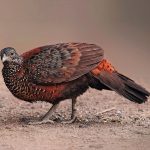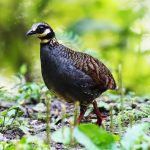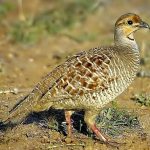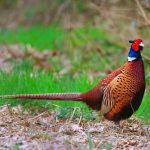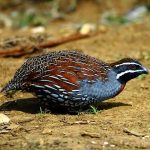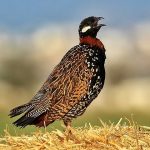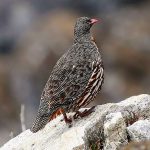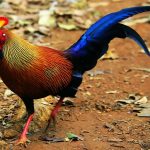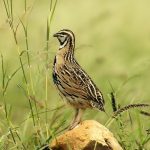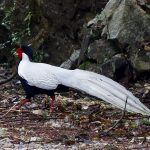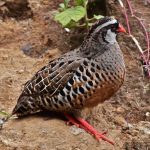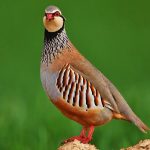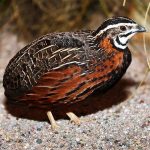Blood pheasant
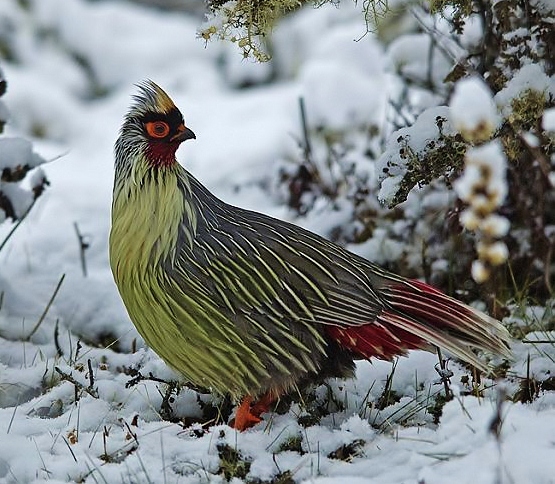
 |
| Photo by Dhritiman Mukherjee (Oriental Bird Images) |
Common name:
blood pheasant (en); faisão-sangue(pt); ithagine ensanglantée (fr); faisán de sangre (es); blutfasan (de)
Taxonomy:
Order Galliformes
Family Phasianidae
Range:
This Asian species is found in the mountains of Nepal, northern India, Bhutan, Tibet, northern Myanmar and south-central China.
Size:
Blood pheasants are 40-48 cm long and weigh 410-620 g.
Habitat:
These birds are found in coniferous and mixed forests, in bamboo forests, scrublands and alpine meadows. They occur at altitudes of 2.500-4.500 m.
Diet:
These birds eat lichens, pine seeds, green shoots, berries and some invertebrates including snails, butterflies, flies and beetles.
Breeding:
Blood pheasants breed in May-July. They nest on the ground, in a shallow saucer made of dry twigs lined with leaves, thin tree roots and mosses. The female lays 5-14 pink or yellowish white eggs with brown speckles, which she incubates alone for 27-33 days while the male stands guard. The chicks are able to walk and feed themselves just 2 days after hatching, but continue to be brooded and protected by the female for 5-6 weeks.
Conservation:
IUCN status – LC (Least concern)
This species has a very large breeding range and is reported to be common and widespread in some areas and scarce in others. Populations are declining throughout much of its range owing to habitat loss and degradation caused by timber extraction, overgrazing and agricultural conversion, as well as hunting pressure. Still, the blood pheasant is not considered threatened at present.

